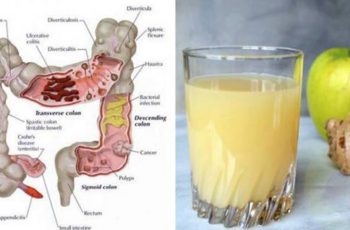
Are you nearing your due date and interested in learning how to stimulate your nipples to induce labor? Discover the practical guidelines and important considerations in this comprehensive guide.
- Nipple stimulation releases oxytocin, which helps initiate labor and strengthen contractions.
- Consult with your doctor or midwife before attempting nipple stimulation, especially if you have a high-risk pregnancy.
- Perform gentle massaging of the areola using your fingers or a breast pump.
- Focus on one breast at a time and limit stimulation to 5 minutes with a 15-minute break in between.
- Monitor contractions and stop stimulation when contractions are 3 minutes apart or less and last for 1 minute or longer.
By combining nipple stimulation with other natural labor-inducing techniques, you can potentially enhance the effectiveness. Always communicate with your healthcare professional, keep track of contractions, and know when it’s time to go to the hospital or birth center once labor begins.
How Does Nipple Stimulation Help Induce Labor?
Nipple stimulation is a natural way to induce labor that works by releasing a hormone called oxytocin, which plays a crucial role in initiating labor and intensifying contractions. When the nipples are stimulated, nerve signals are sent to the brain, triggering the release of oxytocin from the pituitary gland. Oxytocin then travels through the bloodstream to the uterus, where it stimulates contractions.
This method has been used for centuries and is believed to be effective in jump-starting labor for women who are near or past their due dates. It is important to note that nipple stimulation should only be attempted under the guidance of a healthcare professional, as it may not be suitable for everyone. Consulting with your doctor or midwife before trying this technique is crucial, especially if you have any underlying medical conditions or a high-risk pregnancy.
To effectively stimulate the nipples, gentle massaging of the areola can be performed using your fingers or a breast pump. It is recommended to focus on one breast at a time, applying gentle pressure and circular motions. Timing and duration are important factors to consider. It is generally advised to limit stimulation to 5 minutes, followed by a 15-minute break. This cycle can be repeated for up to an hour, but should not exceed 3 hours in total.

When using nipple stimulation as a labor-inducing technique, it is crucial to monitor contractions carefully. As the contractions intensify, they should become more frequent, lasting longer, and growing in intensity. It is recommended to stop nipple stimulation when contractions are approximately 3 minutes apart or less, and each contraction lasts for 1 minute or longer. This indicates that labor has progressed and it is time to prepare for delivery.
| Benefits of Nipple Stimulation | Considerations for Nipple Stimulation |
|---|---|
|
|
Remember, nipple stimulation is just one method to induce labor naturally. It’s important to discuss with your healthcare professional to determine if it is suitable for you and to receive personalized guidance. Being informed, prepared, and under the care of a medical expert will ensure your safety and the well-being of both you and your baby during the labor process.
Consult with Your Healthcare Professional
Before attempting nipple stimulation to induce labor, it is vital to consult with your doctor or midwife, particularly if you have a high-risk pregnancy. Your healthcare provider will be able to assess your individual situation and advise you on the safety and suitability of nipple stimulation as a labor-inducing method.
Nipple stimulation is an effective technique that involves gently massaging the areola using your fingers or a breast pump. By stimulating the nipples, the body releases oxytocin, a hormone that helps initiate labor and strengthen contractions. However, it’s important to note that nipple stimulation should only be performed under the guidance and supervision of a healthcare professional.
- Focus on one breast at a time and gently massage the areola using circular motions.
- Limit stimulation to 5 minutes, followed by a 15-minute break to allow your body to respond.
- If using a breast pump, follow the manufacturer’s instructions and adjust the settings to a comfortable level.
Monitoring contractions during nipple stimulation is crucial. Stop stimulation when contractions are 3 minutes apart or less and last for 1 minute or longer. This indicates that labor is progressing, and it’s time to seek medical attention. Remember to communicate with your healthcare professional throughout the process, providing updates on your progress and discussing any concerns or questions you may have.

| Nipple Stimulation Techniques | Time Limits |
|---|---|
| Gently massage the areola using circular motions | 5 minutes |
| Take a 15-minute break between stimulation sessions | N/A |
| Monitor contractions | Stop when contractions are 3 minutes apart or less and last for 1 minute or longer |
Nipple Stimulation Techniques
To stimulate your nipples for labor induction, you can use gentle massaging techniques either with your fingers or a breast pump. Let’s explore the best practices to maximize the effectiveness of this method.
When using your fingers, start by washing your hands thoroughly with soap and warm water to ensure cleanliness. Then, apply a small amount of lubricant or nipple cream to reduce friction. Gently rub the areola in circular motions, moving from the outer edges towards the nipple. Apply a gentle but firm pressure, taking care not to cause any discomfort. You can switch between different techniques, such as rolling the nipple between your thumb and index finger or using a pinching motion. Remember to focus on one breast at a time to avoid overstimulation.
If you prefer to use a breast pump, select a pump that allows for gentle suction and adjustable settings. Begin by placing the pump over the breast, making sure the nipple is well-centered. Start with the lowest suction level and gradually increase it until you feel a comfortable amount of pressure. Use the pump for around 5 minutes on each breast, with a 15-minute break in between sessions to allow the oxytocin levels to build up. This technique can help stimulate the release of oxytocin and trigger contractions.
It’s important to remember that nipple stimulation should be done cautiously and in moderation. Overstimulation may lead to excessively strong contractions or fetal distress. Always pay attention to your body’s response and monitor the frequency, duration, and intensity of contractions. If contractions become too frequent (3 minutes apart or less) and last for 1 minute or longer, it’s time to stop and prepare for labor.
| Best Practices for Nipple Stimulation | Addison’s Tip: “Make sure to find a comfortable position, such as sitting in a supportive chair or lying on your side, to avoid strain on your back and neck while performing nipple stimulation.” |
|---|---|
| Consult your healthcare professional before attempting nipple stimulation. | It is crucial to seek advice from your healthcare provider, especially if you have a high-risk pregnancy or any concerns about labor induction. |
| Limit stimulation to 5 minutes per breast. | Prolonged stimulation may lead to exhaustion and overstimulation. Taking breaks allows the oxytocin levels to build up gradually. |
| Focus on one breast at a time. | Working on one breast at a time helps ensure effective stimulation and avoids overwhelming the body with excessive oxytocin release. |
| Monitor contractions. | Keep track of the frequency, duration, and intensity of contractions. Stop stimulation if contractions become too frequent or intense. |
| Combine with other natural labor-inducing techniques. | Nipple stimulation can be combined with exercises, sexual activity, spicy foods, bumpy car rides, and evening primrose oil to enhance the effectiveness of labor induction. |
Remember, nipple stimulation should always be done under the guidance of your healthcare professional. It is a natural method that can be used to encourage labor, but it’s important to approach it with caution and be aware of any potential risks or complications. By following these best practices and staying in close communication with your healthcare provider, you can make informed decisions and take control of your labor induction journey.

Monitoring Contractions During Nipple Stimulation
While engaged in nipple stimulation, it is crucial to monitor the frequency, duration, and intensity of contractions to ensure a safe and effective labor induction process. Contractions play a key role in progressing labor and timing is essential in avoiding complications. By keeping a close eye on your contractions, you can make informed decisions and adjust your stimulation techniques accordingly.
During nipple stimulation, contractions may start off mild and irregular. However, as you continue, they should become more rhythmic and increasingly intense. A common guideline is to monitor contractions and stop stimulation when they occur at intervals of 3 minutes or less and last for 1 minute or longer. This indicates that your labor is progressing and it’s time to focus on relaxing and preparing for the next stage.
It is helpful to record the duration and intervals between contractions using a timer or stopwatch. This will give you a clear and accurate picture of your progress. Additionally, paying attention to the intensity of contractions can provide important insights. Strong contractions that are accompanied by pressure in the pelvis and lower back are positive indications that your body is responding well to the stimulation.
Remember, every labor is unique, and it is essential to consult with your healthcare professional throughout the process. They can guide you in monitoring contractions, interpret their significance, and help you determine the best course of action. Open and regular communication with your healthcare provider will ensure a safe and positive labor induction experience.

Table: Monitoring Contractions
Use the following table to record the frequency, duration, and intensity of contractions:
| Contractions | Duration | Interval | Intensity |
|---|---|---|---|
| 1st | 30 seconds | 5 minutes | Mild |
| 2nd | 45 seconds | 4 minutes | Moderate |
| 3rd | 1 minute | 3 minutes | Strong |
| 4th | 1 minute 15 seconds | 3 minutes | Strong |
By completing this table, you can easily track the progress of your contractions and gain a better understanding of your labor induction journey. Remember that each individual’s experience may vary, so it’s important to consult with your healthcare provider for personalized advice.
Combining Nipple Stimulation with Other Methods
Nipple stimulation can be complemented with other natural methods to encourage labor, such as exercise, intimacy, and specific dietary choices. Let’s explore how these methods can work together effectively.
Exercise is a great way to prepare your body for labor and can be done alongside nipple stimulation. Engaging in activities like walking, prenatal yoga, or gentle stretching can help promote circulation, strengthen the pelvic floor muscles, and potentially help move the baby into the birthing position. Remember to listen to your body and choose exercises that are safe and comfortable for you.
Intimacy with your partner can also play a role in stimulating labor. Sexual activity, including orgasms, can trigger the release of oxytocin, the same hormone involved in labor contractions. It is important to communicate with your partner and ensure that you both feel comfortable and ready for intimacy during this time.
“Intimacy with your partner can be a beautiful way to connect and help stimulate the onset of labor. Just ensure that you both are in the right mindset and have open communication about your desires and boundaries,” says Dr. Jane Peterson, a leading obstetrician.
In terms of diet, certain foods are believed to have labor-inducing properties. Some examples include spicy foods, pineapple, dates, and red raspberry leaf tea. While there is limited scientific evidence to support these claims, incorporating these foods into your diet during the last few weeks of pregnancy may be worth a try. It is always important to maintain a balanced diet and consult with your healthcare professional before making any significant changes.
Table: Natural Labor-Inducing Methods and Their Potential Effects
| Method | Potential Effect |
|---|---|
| Nipple Stimulation | Release of oxytocin, initiation and strengthening of contractions |
| Exercise | Promotes circulation, strengthens pelvic floor muscles, helps with baby positioning |
| Intimacy | Release of oxytocin through sexual activity |
| Spicy Foods | Believed to stimulate contractions, but limited scientific evidence |
| Pineapple | Contains bromelain, which may help soften the cervix |
| Dates | Provide energy, contain compounds that may promote contractions |
| Red Raspberry Leaf Tea | Used to tone the uterus, but more research is needed |
Remember, every pregnancy is unique, and what works for one person may not work for another. It is essential to listen to your body, consult with your healthcare professional, and make informed decisions. By combining nipple stimulation with other natural methods, you can create a holistic approach to support the onset of labor and navigate this exciting phase with confidence.

Maintaining open and regular communication with your healthcare professional is essential when using nipple stimulation or any other natural methods to induce labor. Your doctor or midwife can provide valuable guidance and monitor your progress throughout the process. They will be able to assess whether nipple stimulation is suitable for you, especially if you have a high-risk pregnancy.
During your prenatal visits, discuss your interest in using nipple stimulation for labor induction. Your healthcare professional will be able to explain the potential benefits and risks based on your specific circumstances. They can also provide instructions on how to perform nipple stimulation safely and effectively.

Remember, each pregnancy is unique, and what works for one person may not work for another. Your healthcare professional will take into consideration factors such as your gestational age, medical history, and any complications you may have. They will guide you on when to start nipple stimulation and how frequently you should do it.
As labor progresses, it is important to inform your healthcare professional about any changes you experience, such as an increase in contractions or a decrease in fetal movement. They can help you determine the appropriate time to go to the hospital or birth center, ensuring you receive the necessary medical care during this crucial time.
Safety Precautions and Considerations
While nipple stimulation can be an effective method to induce labor naturally, it is crucial to be aware of certain safety precautions and considerations to ensure your well-being and that of your baby. Before attempting nipple stimulation, it is important to consult with your healthcare professional, especially if you have a high-risk pregnancy. They can provide personalized guidance and ensure that it is safe for you to try this method.
When performing nipple stimulation, it is recommended to focus on one breast at a time and to limit stimulation to 5 minutes with a 15-minute break in between. This allows for adequate rest and prevents overstimulation. Gentle massaging of the areola using your fingers or a breast pump can effectively stimulate the nipples. However, it is important to remember that every woman’s body is unique, and what works for one person may not work for another. It is important to listen to your body and adjust the intensity and frequency of stimulation accordingly.
Monitoring contractions during nipple stimulation is essential. Stop stimulation if contractions become too frequent, lasting for 1 minute or longer and occurring at intervals of 3 minutes or less. This can be an indication that labor has started, and it is time to go to the hospital or birth center. Keeping track of the frequency, duration, and intensity of contractions can help you make an informed decision about when to seek medical attention.
| Tip | Quote |
|---|---|
| Tip: Combine nipple stimulation with other natural labor-inducing techniques, such as exercise, sex, spicy foods, bumpy car rides, and evening primrose oil to potentially enhance the effectiveness. However, always consult with your healthcare professional before trying any new methods. |
|
Remember, the power of patience and preparation should not be underestimated when using nipple stimulation as a labor-inducing method. It may take time for the stimulation to have an effect, and it is important to stay relaxed and mentally prepared. Practice relaxation techniques, visualize a positive birth experience, and set realistic expectations. Trust your body and the process, and know that you are taking an active role in your labor induction journey.

As you embark on using nipple stimulation to induce labor, remember that patience, preparation, and a positive mindset are key factors in achieving a successful outcome. While nipple stimulation is a natural and effective method to initiate labor, it is important to approach it with the right mindset and prepare yourself both mentally and physically.
Preparing for nipple stimulation involves creating a calm and relaxing environment where you can focus on the task at hand. Find a comfortable spot, dim the lights, and play soothing music if it helps you relax. Take deep breaths and visualize the progress you are making towards meeting your baby.
In addition to mental preparation, it’s essential to ensure you have the necessary supplies. If you plan to use a breast pump, make sure it is cleaned and ready to use. Have a timer or clock nearby to track the duration of your stimulation sessions and breaks. Stay hydrated by keeping a water bottle within reach, as nipple stimulation can be physically demanding and may cause dehydration.
| Key Tips for Patience and Preparation: |
|---|
| 1. Relaxation: Create a calm and soothing environment to enhance the effectiveness of nipple stimulation. |
| 2. Mental Focus: Visualize the progress you are making towards meeting your baby to stay motivated and positive. |
| 3. Necessary Supplies: Ensure you have a clean breast pump, a timer, and a water bottle nearby. |
“Patience is the companion of wisdom.” – Saint Augustine
Remember, nipple stimulation is not a guaranteed method to induce labor, so it’s important to be patient and give your body time to respond. It may take several sessions of nipple stimulation before you notice any significant changes. Stay positive and trust in your body’s ability to progress naturally.
By being patient and prepared, you are empowering yourself to take an active role in your labor induction process. Keep an open line of communication with your healthcare professional, and don’t hesitate to reach out for guidance or reassurance.

In addition to mental preparation, incorporating relaxation techniques into your nipple stimulation sessions can help enhance their effectiveness. Deep breathing exercises, visualization, and guided meditation can help you stay calm and focused throughout the process.
| Relaxation Techniques: |
|---|
| 1. Deep Breathing: Take slow, deep breaths in through your nose, hold for a few seconds, and exhale through your mouth. Focus on releasing tension with each breath. |
| 2. Visualization: Close your eyes and imagine the gentle surges of your contractions bringing your baby closer to meeting you. Picture yourself in a peaceful and serene environment. |
| 3. Guided Meditation: Listen to pre-recorded guided meditations specifically designed for labor induction. These can help you relax and guide you through the process step by step. |
Remember, every woman’s labor journey is unique, and what works for one may not work for another. Trust your instincts and listen to your body throughout the process. Stay positive, be patient, and know that you are capable of bringing your baby into the world in your own time.
Conclusion
By understanding how to stimulate your nipples to induce labor, you have taken an active role in your own birthing journey. Remember to always consult with your healthcare professional, monitor your contractions, and trust your instincts as you approach your due date.
Nipple stimulation is an effective method to initiate labor and strengthen contractions. It works by releasing oxytocin, a hormone that plays a crucial role in the labor process. Before attempting nipple stimulation, it is important to consult with your doctor or midwife, especially if you have a high-risk pregnancy. They can provide personalized guidance and ensure that it is safe for you.
When performing nipple stimulation, gently massage the areola using your fingers or a breast pump. It is recommended to focus on one breast at a time and limit stimulation to 5 minutes, with a 15-minute break in between. This allows your body to respond to the stimulation and prevents overstimulation. Remember to pay attention to any changes in your contractions and stop stimulation when contractions are 3 minutes apart or less and last for 1 minute or longer.
In addition to nipple stimulation, you can also consider combining it with other natural labor-inducing techniques, such as exercise, sex, spicy foods, bumpy car rides, and evening primrose oil. Just make sure to discuss these methods with your healthcare professional before trying them.
Throughout this journey, ongoing communication with your healthcare professional is crucial. They can help you gauge your progress, provide guidance, and determine when it’s time to head to the hospital or birth center. Remember, every birthing experience is unique, and it’s important to trust your instincts and take the necessary precautions to ensure a safe and healthy delivery.
FAQ
How does nipple stimulation help induce labor?
Nipple stimulation releases oxytocin, which helps initiate labor and strengthen contractions.
Is nipple stimulation safe for everyone?
It is important to consult with your doctor or midwife, especially if you have a high-risk pregnancy, before trying nipple stimulation.
How do I perform nipple stimulation?
Gently massage the areola using your fingers or a breast pump, focusing on one breast at a time. Limit stimulation to 5 minutes with a 15-minute break in between.
What should I do if contractions become too intense?
Monitor contractions and stop nipple stimulation when contractions are 3 minutes apart or less and last for 1 minute or longer.
Can I combine nipple stimulation with other methods to induce labor?
Yes, nipple stimulation can be combined with other natural labor-inducing techniques such as exercise, sex, spicy foods, bumpy car rides, and evening primrose oil.
When should I contact my healthcare professional?
It is important to maintain open communication with your healthcare professional and know when to go to the hospital or birth center once contractions begin.




